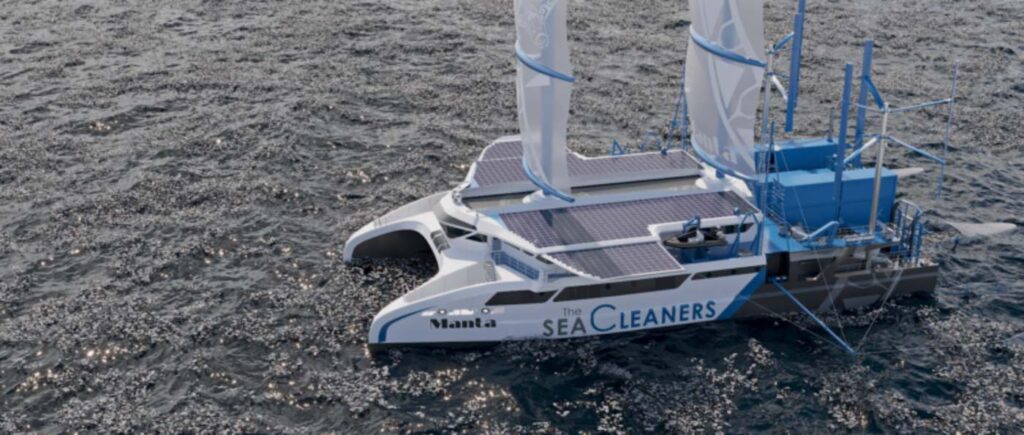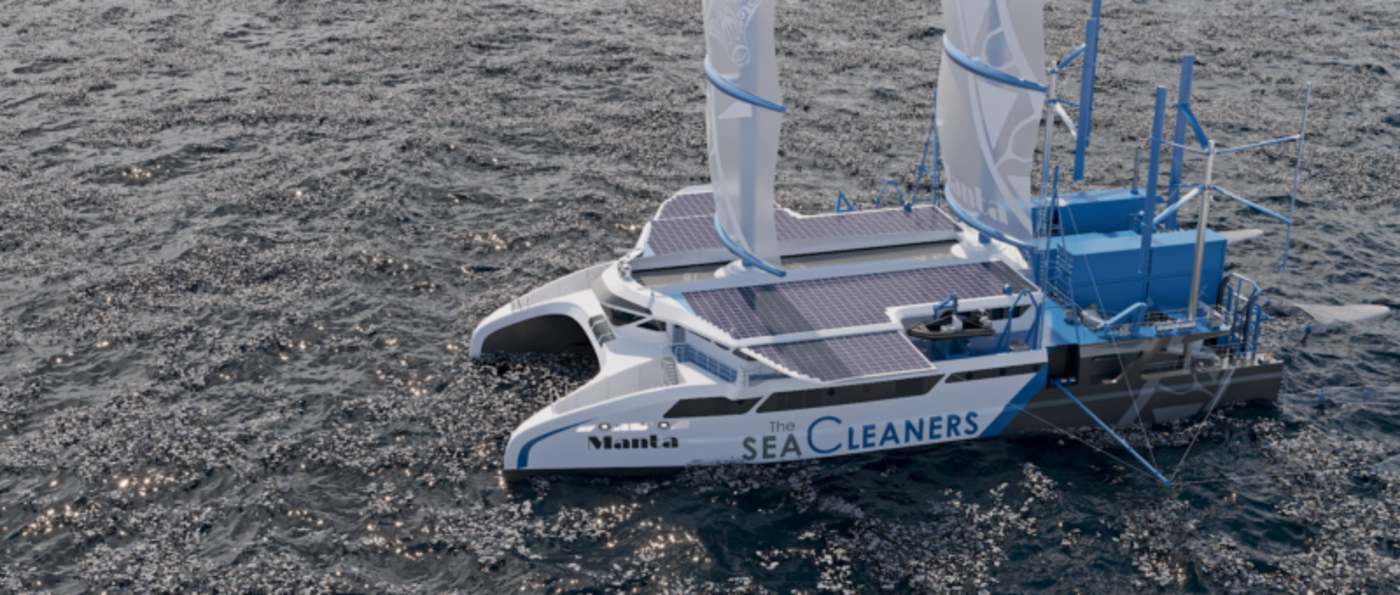
A professional yacht racer in France, annoyed by the constant sightings of floating mats of plastic garbage in coastal waters, has designed an ocean-cleaning sailboat that is powered by the waste it collects.
The 56-meter (184 feet) Manta is the first offering from racer Yves Bourgnon’s SeaCleaners Project, and would be one of the largest waste-collecting vessels on the seas, according to Reuters.
At the end of the film Back to the Future, Dr. Emmet Brown has famously managed to replace his plutonium-powered generator with one which uses ordinary garbage. Like the DeLorean in the movie, the Manta uses garbage to power an electric motor that works in conjunction with the sails to propel the large catamaran.
In between the three pontoons, conveyor belts scoop up trash as small as 10 millimeters, over which the Manta glides, while three trawl nets drifting behind (to a depth of 1 meter, thereby avoiding sea life) add to the onboard collection. This trash is then fed into a processing machine where crewmen sort it before moving it into an incinerator that shreds and melts the plastic—and even uses the heat and gases—to power a turbine to creates the electric power.
MORE: Scientists Make Microplastics Breakthrough, Devising Method to Trap And Remove Them
Paired with solar panels lining the decks and a wind turbine that harvests power from the wind coming off the sails, the Manta would be 70% self-sufficient in terms of energy, allowing it to sail around sucking up 3 tons of waste an hour, without almost ever needing to return to harbor and refuel or offload plastic.
There’s also room onboard for a scientific laboratory, allowing marine biologists and chemists to study the effects of plastic on the ecosystem.
Unveiled purely as a concept, the SeaCleaners want to put a working prototype on the waves by 2024. Bourgnon believes that if 400 of the vessels were made, they could eventually remove 33% of the ocean’s plastic pollution.
(SEE how the boat would work in the video below.)
SHARE This Exciting Technology With Friends…





















Fascinating – but how does it avoid collecting sealife?